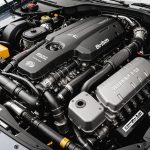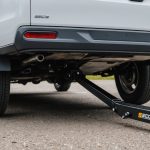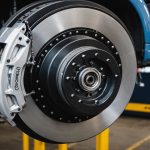Understanding Vehicle Depreciation
Vehicle depreciation plays a crucial role in understanding how the value of a vehicle diminishes over time. It is a significant factor in calculating a vehicle’s value, particularly when considering the depreciation tax benefits for business vehicles. In the UK, this concept holds substantial importance in the context of tax laws.
Vehicle depreciation impacts a vehicle’s resale value, often decreasing it significantly within the first few years of purchase. Businesses that own vehicles benefit from understanding vehicle depreciation through applicable tax deductions. In essence, as the vehicle ages and its value decreases, the depreciation becomes a potential tax deduction.
In parallel : Maximize your vehicle”s towing capability: the ultimate uk guide to determining the perfect towing capacity
UK tax laws incorporate depreciation tax benefits through capital allowances, assisting businesses in claiming part of the vehicle’s cost as tax deductible. This helps in offsetting profits with the declining value of business assets. Businesses are advised to stay updated on these laws to maximise their tax efficiency when dealing with vehicle depreciation.
Moreover, understanding these principles is key to making more informed decisions regarding vehicle purchases and financial planning. Familiarity with depreciation and its related tax benefits empowers businesses to optimise their investments while staying compliant with UK vehicle laws.
In parallel : Unlocking the secrets of the uk”s congestion charge zones: an essential guide for electric vehicle drivers
UK Tax Laws Related to Vehicle Depreciation
Understanding the capital allowances in UK tax laws is essential for businesses striving to manage vehicle depreciation effectively. This approach allows businesses to claim a portion of their vehicle costs as tax deductible, aiding in financial management and compliance with UK vehicle laws.
Capital Allowances Explained
Capital allowances enable businesses to deduct some expenses related to vehicle depreciation from their taxable income. This tax relief is designed to account for the gradual reduction in the vehicle’s value. When a vehicle is purchased, a business can claim a portion of its cost in the form of capital allowances, reducing overall taxable profit.
Vehicle Types Affecting Depreciation Claims
The type of vehicle significantly impacts the amount businesses can claim in depreciation. Categories include cars, vans, and lorries, each with distinct depreciation rates and claims. This categorisation ensures that depreciation calculations align with the vehicle’s usage and lifecycle.
Tax Rates and Limits on Depreciation
Different tax rates and limits apply to various business types and vehicles when calculating depreciation. The rate at which a vehicle depreciates can influence a business’s tax savings. Understanding specific tax rates and the limits applicable to your business type is crucial for optimising tax deductions.
Calculating Vehicle Depreciation
Calculating vehicle depreciation accurately is crucial for optimising tax savings. Businesses typically adopt one of two main methods: the straight-line method or the reducing balance method.
Common Methods for Depreciation
-
Straight-Line Method: This straightforward approach involves dividing the vehicle’s cost by its expected use lifespan. Each year, the vehicle depreciates by a fixed amount, providing a consistent value over time.
-
Reducing Balance Method: Here, depreciation is calculated as a percentage of the vehicle’s value at the start of the year. This method assumes higher depreciation early in the vehicle’s life, aligning with many vehicles’ actual loss in value.
Factors Influencing Depreciation
Factors such as the type of vehicle, its usage, and the UK vehicle laws impact depreciation tax benefits. For example, high-mileage vehicles depreciate faster, reducing their market value more quickly. Businesses must assess these elements to ensure precise calculations.
Understanding these depreciation methods and factors is vital. It allows businesses to make informed decisions that maximise their tax position effectively. By considering each element carefully, companies can strategically plan their vehicle procurement and manage their assets intelligently.
Claiming Tax Allowances for Vehicle Depreciation
Understanding the process for claiming tax allowances for vehicle depreciation involves navigating the requirements and deadlines set by UK tax laws. Ensuring all necessary documentation is prepared meticulously is crucial for accurate depreciation claims.
Required Documentation for Claims
Businesses must gather comprehensive documentation to support their claims. This typically includes purchase invoices, a detailed depreciation schedule, and evidence of the car’s usage in business operations. Accurate record-keeping simplifies the claiming process and helps verify claims during potential audits.
How to Fill Out Relevant Tax Forms
Completing the correct tax forms is essential when filing for depreciation claims. Forms should be filled out with meticulous attention to detail, including vehicle purchase dates, depreciation rates, and applicable allowances. Errors can lead to delays or rejections, so businesses are encouraged to double-check entries before submission.
Key Deadlines for Submitting Claims
Missing critical deadlines can result in lost depreciation tax benefits. Businesses should mark the fiscal year’s end on their calendars, as it is a typical deadline for submitting claims. Planning ahead by setting reminders can facilitate timely submissions, ensuring no financial benefits are forfeited. Careful adherence to these guidelines maximises tax efficiency.
Strategies to Maximize Tax Savings
Businesses aiming to maximise tax savings can develop several effective strategies, focusing on the selection and timing of vehicle purchases. Choosing the right vehicle can significantly enhance tax benefits due to varying depreciation rates. For instance, selecting a vehicle with lower emissions might offer additional tax incentives, reflecting a more favourable outlook in terms of UK vehicle laws.
Timing is crucial in taking full advantage of depreciation benefits. Purchasing vehicles at the fiscal year-end can potentially accelerate depreciation claims, aligning tax deductions with the business’s financial calendar. Additionally, the right timing can optimise depreciation tax benefits due in the following tax year.
Beyond vehicle-specific strategies, businesses can explore other tax reliefs to work alongside vehicle depreciation allowances. Leveraging capital allowances for non-vehicle assets or investigating broader deductions under UK tax laws amplifies overall tax efficiency.
Implementing these tax-saving strategies necessitates a thorough understanding of current tax regulations and trends. Diligent planning and strategic financial management ensure that businesses can not only comply with tax laws but also exploit every possible avenue to reduce their tax liabilities effectively.
Real-World Examples of Vehicle Depreciation Savings
Exploring real-life examples provides valuable insights into how businesses leverage vehicle depreciation for tax savings. By examining these scenarios, companies can better strategise and optimise their own depreciation benefits.
Case Study: Small Business Owner
In this example, a small business owner purchased a fleet of five vehicles for company use. By adopting the straight-line depreciation method, they could predictably manage depreciation tax benefits annually. This approach resulted in a consistent reduction in taxable income, easing the business owner’s financial planning. The structured depreciation helped in optimising tax savings by aligning closely with UK vehicle laws governing capital allowances.
Case Study: Fleet Management Company
A larger company with a diverse vehicle fleet applied the reducing balance method for depreciation. Given the heavy usage and rapid depreciation, this method allowed the company to claim larger allowances during early vehicle ownership years. This resulted in substantial immediate tax savings, a strategic advantage for balancing books and reinvesting in fleet upgrades promptly.
Summary of Key Insights from Case Studies
These examples highlight the importance of choosing suitable depreciation methods and understanding vehicle categories. Small businesses benefit from predictable cost management, while larger companies leverage immediate deductions to maintain robust financial health. Timing and awareness of UK vehicle laws are crucial for maximising these benefits.











